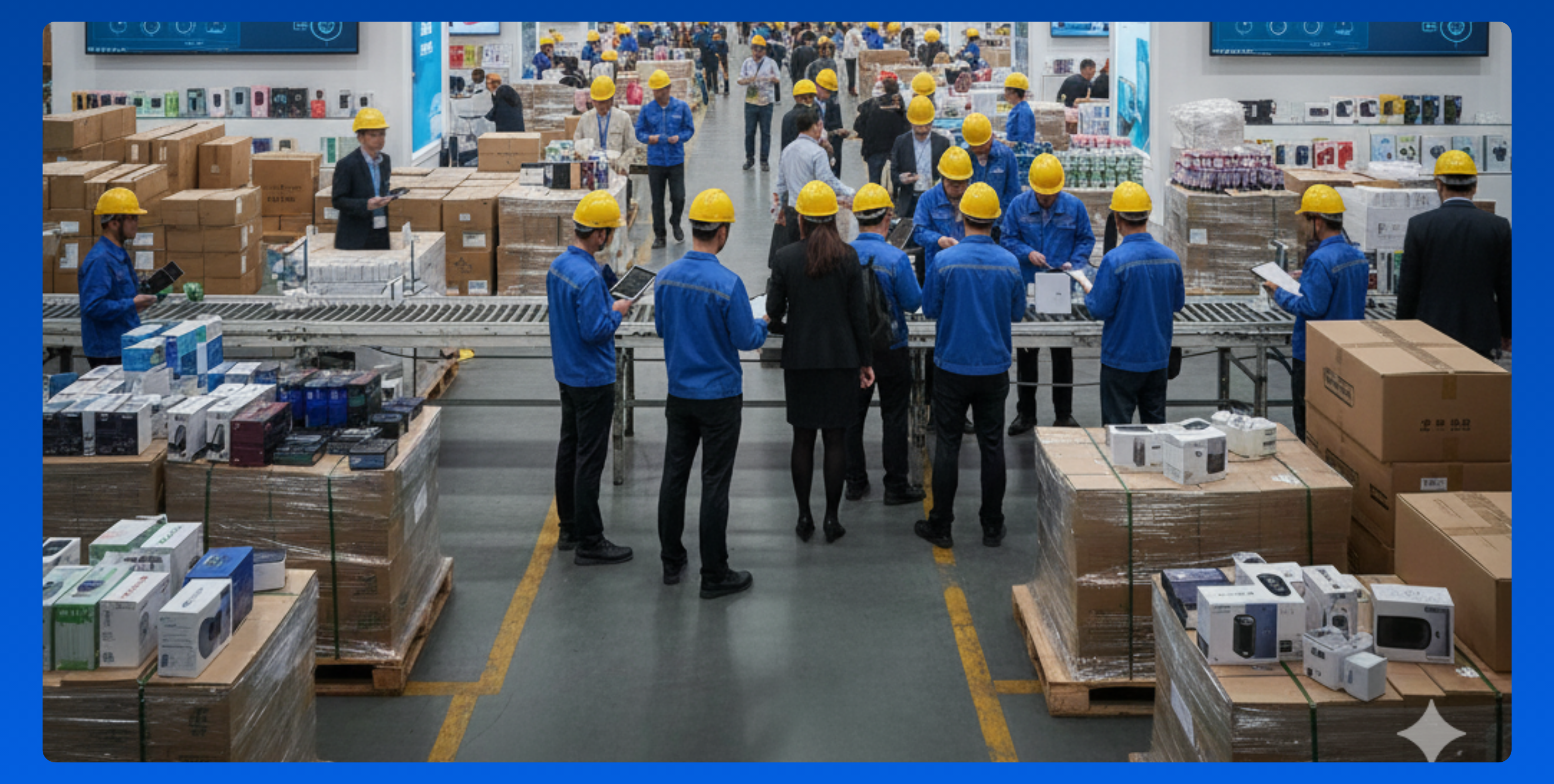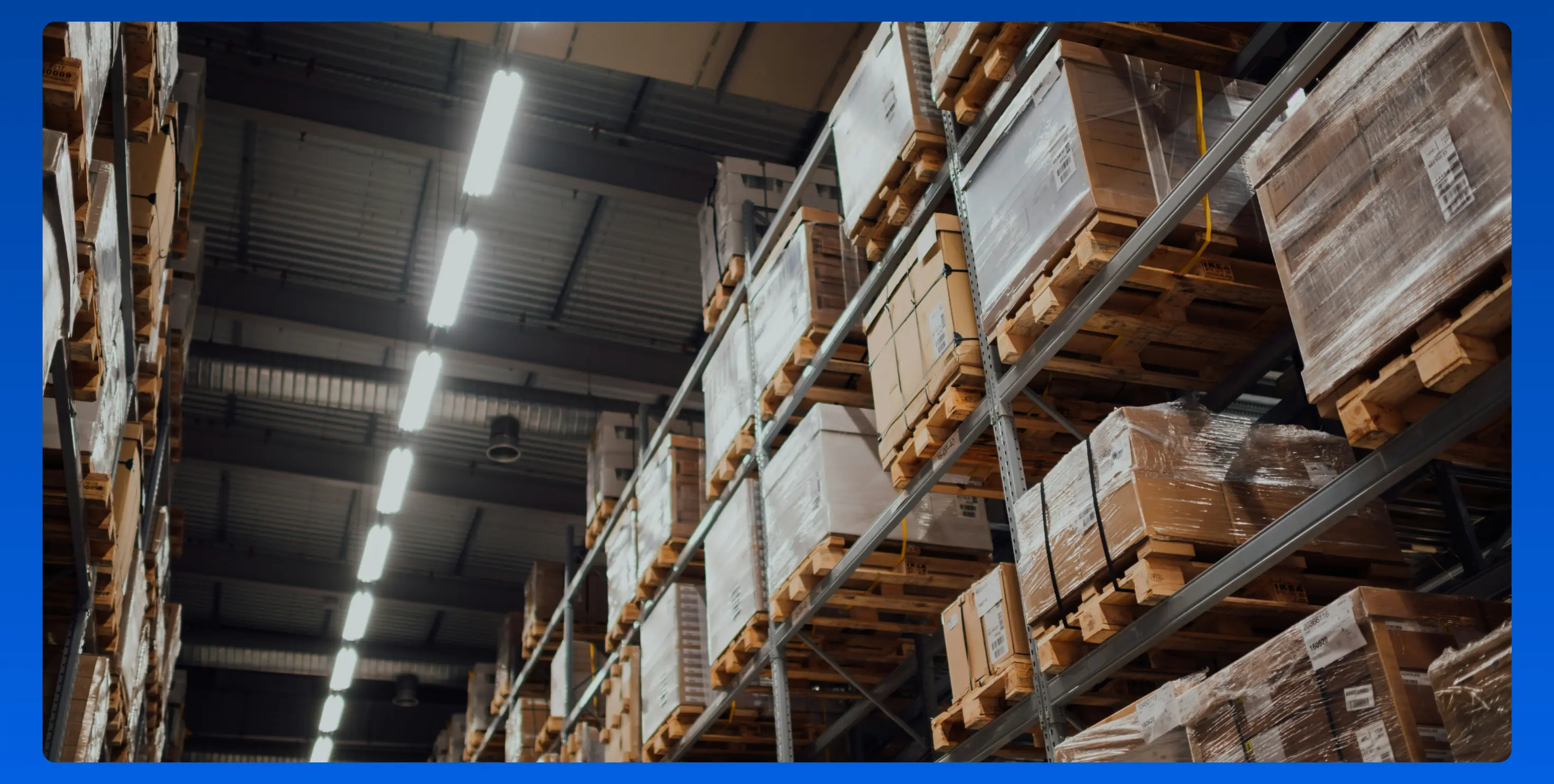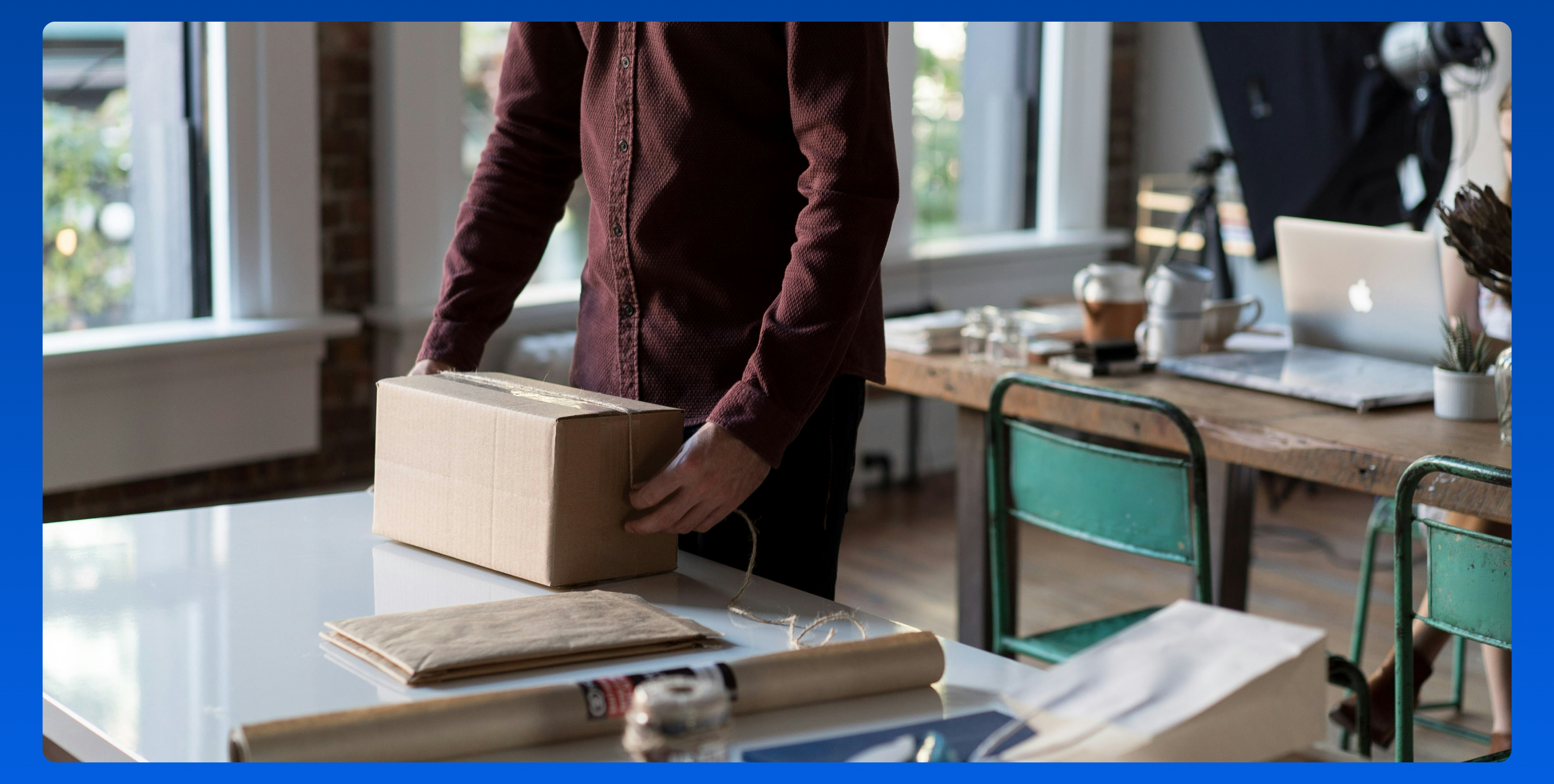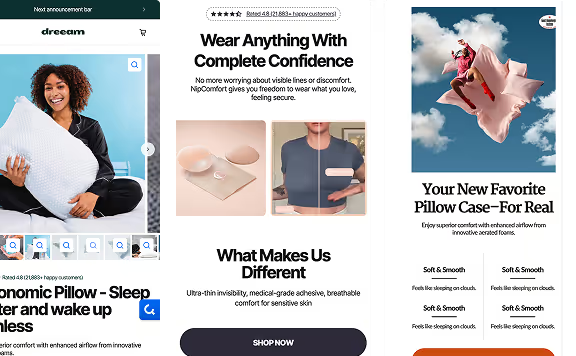The 5 key points to remember:
The real cost of a product : A €5 product really costs ~€10 (transport + customs + packaging + logistics). Aim for a minimum gross margin from x4 to x5 to be profitable.
3 models to get you started : Dropshipping (simple, margins 20-30%), Own stock (margins x5-x7, total control), 3PL (scalable after 50-100 orders/day).
Diversify your suppliers : One = too risky. Always have a plan B and at least 30 days of stock in advance.
Speed = your competitive advantage : 75% of customers expect delivery ≤48h. Ships in <24h to maximize satisfaction.
Winning strategy : Start internally to control your process, then outsource to a 3PL when you scale up to free up your time.
Are you launching your e-commerce and wondering how to manage your sourcing and logistics without breaking the bank or losing customers due to endless delays? This is normal: the supply chain is the lifeblood in e-commerce. A good product can fail due to poorly thought-out logistics, just as botched sourcing can cost you thousands of euros in returns and after-sales service.
In this guide, we will show you how to effectively connect sourcing and logistics to create a profitable, fluid and scalable e-commerce chain. No theoretical talk: only concrete strategies, real examples and tools that you can apply today.
On the program:
- The crucial link between sourcing and logistics
- The three operational models you need to know
- How to source intelligently and calculate your true costs
- Logistics management from A to Z (reception, shipping, returns)
- Technologies and trends 2025
- Checklists and case studies to take action
Ready? Let's go!
Understand the link between the sourcing of your products and logistics

Sourcing and logistics are inseparable. Sourcing = finding and buying the right products. Logistics = storing, preparing, shipping, managing returns. One without the other leads to failure.
Example: great product, x10 margin, but supplier that ships in 3 weeks → negative reviews, refunds, failure.
The e-commerce equation:
Cost (profitable sourcing) + Speed (logistics) + Quality (customer satisfaction)
A failed pillar ruins the others.
The complete flow of your supply chain looks like this:
- Sourcing → Finding and negotiating with suppliers
- Transport → Transport products from the factory
- Storage → Receiving and storing
- Preparation → Preparing orders (picking, packing)
- shipping → Deliver to the customer
- Returns → Manage reverse logistics
The three main e-commerce operating models
Before diving into the details of sourcing and logistics, you need to understand Which model corresponds to your project. There are three main approaches, each with its pros and cons.
Dropshipping, a simple but limited model
What is it? You are selling a product that you have never touched. When a customer orders, your supplier ships directly.
For whom? Perfect for getting started, testing a product quickly, or if you don't have an initial budget.
The pitfalls: Delivery times of 7 to 21 days (from China), variable quality, difficult to retain. If you want to scale seriously, pure dropshipping quickly reaches its limits.
Own stock, ideal for optimizing margins
What is it? You buy your products in bulk (often with a MOQ — Minimum Order Quantity), you store them at home or in a warehouse, and you manage the shipments yourself.
For whom? For those who want solid margins and total control over quality and customer experience.
The pitfalls: Need cash to buy stock, risk of unsold items, time-consuming management. At the beginning, many send the packages themselves to control quality and improve their marketing creatives thanks to direct feedback.
3PL aka the start of scaling
What is it? You buy your products in bulk, but a logistics provider (3PL = Third-Party Logistics) stores, prepares and ships for you.
For whom? For those who want to scale without managing the operational part. Ideal when you exceed 50-100 orders/day.
The pitfalls: Costs per order (picking, packing, shipping), less flexibility, customer relationships sometimes impacted.
Different strategies and best practices for your sourcing

Sourcing is 80% of your success. A bad product, even with the best logistics in the world, won't sell. A good, poorly sourced product will ruin you in costs and complications.
Identifying and evaluating suppliers
Where to look?
You have several options depending on your model:
- Alibaba/1688 (China) : The largest catalog in the world. Ideal for volume and low prices, but requires vigilance on quality.
- Trade shows : Canton Fair (China), Made in France, Europages (Europe). Great for creating direct relationships.
- Local manufacturers : More expensive, but higher quality, short deadlines and better communication.
- Sourcing agents : They manage the relationship with the supplier, quality control and logistics. Additional cost, but more peace of mind.
How do I verify a supplier?
NEVER trust blindly. Here is the process:
- Ordering samples : Test the product yourself and have it tested by those around you.
- Identity verification : Request certifications (ISO, CE if necessary), check the company on official records.
- Communication : A good supplier responds quickly, understands your needs and offers solutions.
- Visit if possible : If you can, visit the factory. If not, use a third party inspection service.
Pro tip: Order the products of your competitors to analyze the quality and identify their suppliers. Peel the packaging, the labels, the finishes.
Difference between white label and private label:
- White label : Existing standard product on which you put your logo. Quick to test, standardized, but less differentiated.
- Private label : Personalized product (formula, design, packaging). Longer, more expensive, but unique and better margin.
When you start, use white labels to test quickly. Once validated, go to the private label to differentiate yourself.
Return of xp digifeel.io: local production vs relocation to China
On one of my projects (personalized plates with QR codes), I first wanted to produce everything in France.
Results after 6 months:
- Maximum capacity: 800 products/month
- Time-consuming manual process (QR generation, printing)
- High production cost
- Impossible to scale beyond
Decision: relocation to China:
- Current capacity: 10,000 products/day (x375!)
- Complete automation of the process
- Cost divided by 3
- Almost zero mental and operational load
Lesson:
For a customized product with high demand, local production can quickly become a bottleneck. China is not only cheaper, it also allows you to scale without limits.
⚠️ Attention: This approach is suitable for custom/print-on-demand products. For standard stock, the logic is different
Calculate the real cost of a product
Classic error: You see a €5 product on Alibaba and you think you have a margin of x10. Wrong
The real cost of a product is:
- Supplier product price : €5
- International transport : €2 (depending on volume, weight, incoterm)
- Customs and taxes : €1.50 (VAT, customs duties)
- Custom packaging : €0.50
- Local logistics (3PL, picking, packing): 1€
= Real cost: €10
If you sell at €29.90, your gross margin is €19.90. Remove now:
- Advertising (30-40% of the sales price to start): €10
- Platform/payment fees (3-5%): €1.50
- Returns/after-sales service (5-10%): 2€
Real net margin: around €6.40
That's why we always tell you: aim for a minimum gross margin of x4 to x5 to be profitable.
⚠️ My €18K mistake:
On my first big order in 2019, I saw a €6 product on Alibaba. I was thinking of selling it for €29 with a x5 margin.
In reality, with personalized packaging (which I forgot) + 3PL fees + an unfavorable exchange rate, my real cost was €11.80. My margin? Divided by 2
Out of 1500 units ordered, it cost me €18,000 less margin. I had to sell at a loss to sell out the stock.
Since then, I ALWAYS calculate with ALL the costs before confirming an order. This formula saved me tens of thousands of euros.
Full numerical example (product imported from China):
Securing your supply chain

One supplier = one single point of failure. If your sole supplier shuts down, increases prices, or has a production problem, you're stuck.
Strategies to secure your sourcing:
- Diversify your suppliers : At least 2-3 suppliers for your flagship product.
- Clear contracts : MOQ, deadlines, late penalties, return/refund conditions.
- Proactive communication : Anticipate orders, find out about closure periods (Chinese New Year = 2-3 weeks of closure).
- Buffer stock : Always keep stock at least 30 days in advance.
- Performance monitoring : Evaluate your suppliers regularly (quality, deadlines, communication).
Incoterms you should know:
- FOB (Free On Board) : The supplier pays up to the port of departure, you manage transport and customs.
- DDP (Delivered Duty Paid) : The supplier manages everything up to you (more expensive, but simpler).
The 5 steps of efficient sourcing:
- Research and identification (Alibaba, fairs, recommendations)
- Verification and samples (quality test, communication)
- Negotiation (MOQ, price, deadlines, conditions)
- First test order (small quantity to validate)
- Monitoring and continuous improvement (feedback, optimization)
Comparative table of sourcing platforms:
Logistics, from reception to delivery
You sourced your product, negotiated with your supplier, ordered your stock. Now, you need this stock to reach your customers quickly, reliably and cost-effectively. That's where logistics come in.
Inbound logistics (reception & storage)
This is the phase where your products arrive and are prepared for sale.
Key steps:
- Receiving goods : Verify compliance (quantity, quality, damage).
- Quality control : Test one sample from each lot. If you go through a 3PL, ask for a quality control service.
- Labelling and identification : Barcode, SKU, warehouse locations.
- Integration into your system (WMS) : A WMS (Warehouse Management System) allows you to manage your stock in real time.
Why is it crucial? Poor reception can lead to inventory errors, faulty products sent to customers, and financial losses.
Recommended WMS tools for small structures:
- Odoo (free then paid according to modules)
- Cin7
- TradeGecko (acquired by QuickBooks)
Outbound logistics (preparation & shipping)
This is the phase where an order arrives and needs to be shipped to the customer.
The outbound process:
- Picking : Pick up the product from the warehouse.
- Packing : Pack the product (cardboard, bubble wrap, branded packaging).
- Carrier labelling : Generate the shipping label.
- Delivery to the carrier : Colissimo, Chronopost, Mondial Relay, etc.
- Last mile tracking : Inform the customer, manage delivery problems.
Logistics KPIs to monitor:
- Preparation error rate : Aim < 1%
- Logistics cost per order : Must be < 15% of your average basket
- Average shipping time : Ideally <24 hours after ordering
- On-time delivery rate : Aim > 95%
Choice of carrier:
Pro tip: Offer several delivery options (standard, express, relay point) and charge for express delivery. Free standard delivery above a certain amount increases your average basket.
Reverse logistics (customer returns)
This is the part that we prefer to ignore, but that can ruin your margin if it is poorly managed.
75% of customers say that the ease of return influences their purchase decision. Poor management of returns = negative reviews + loss of customers.
Optimal return process:
- Return request : The customer requests a return via your site or by email.
- Validation : You validate (or refuse if out of time/conditions).
- Label generation : You provide a prepaid label (or the customer pays according to your policy).
- Reception : The product comes back to your warehouse.
- Control : You check the condition of the product.
- Refund or exchange : Treatment according to your policy.
- Reintegration or destruction : If the product is OK, put back in stock. Otherwise, destruction or resale in bulk.
Return KPIs to watch out for:
- Return rate : Aim < 5% (10% acceptable depending on sector)
- Processing time : <7 days
- Return cost : Who pays? (you, customer, shared?)
Pro tip: Analyze the reasons for return. If it is always the same (size, quality, product does not match), it is a red flag for your sourcing or product communication.
Technologies and new trends in the supply chain
The e-commerce supply chain is evolving rapidly. Here are the innovations that will impact your business in 2025 and beyond.
AI & automation
AI is transforming logistics at all levels:
- Demand forecasting : Algorithms that predict future sales to optimize your inventory.
- Inventory optimization : Automatic calculation of the quantities to be ordered.
- Robotic picking : Robots in warehouses that prepare orders (Amazon, Alibaba).
- Customer service chatbots : Automatic management of return requests and follow-up.
Key stat: Businesses using AI for inventory management reduce logistics costs by 15 to 30%. Source: https://www.multidisciplinaryfrontiers.com/uploads/archives/20250409174933_FMR-2025-1-069.1.pdf
Blockchain, traceability and trust
Blockchain makes it possible to trace each stage of your product, from the factory to the end customer. Ideal for premium or responsible brands that want to prove their commitment (origin, manufacturing conditions, certifications).
Hyper-local logistics, the rise of micro-warehouses
The concept: Instead of a large centralized warehouse, you spread your stock across several micro-warehouses in the city (dark stores). Result? Same day delivery or in 2 hours.
Examples: Gorillas, Getir, Flink (even if many have closed, the model persists in niche e-commerce).
For you: If you sell products that require ultra-fast delivery (cosmetics, snacks, high-tech), explore partnerships with local 3PLs.
IoT & real time tracking
IoT (Internet of Things) = sensors connected to your packages, your stocks, your trucks.
Applications:
- Temperature monitoring (fresh products, cosmetics)
- Real-time geolocation of packages
- Alerts in case of shock or damage
Stats you need to know:
- 40% of logistics costs come from the last mile (from the sorting center to the customer). Source
- 73% of consumers consider meeting deadlines to be decisive. Source
- E-retailers who optimize their supply chain increase their margin by 5 to 10 points.
3 innovations to follow in 2025:
- Delivery drones : Still experimental, but more and more tested (Amazon Prime Air, Zipline).
- Autonomous vehicles : Automatic delivery without driver.
- Smart packaging : QR codes, NFC, enhanced unboxing experiences.
Optimizing the profitability and resilience of your supply chain
Your supply chain should be profitable (don't break the bank) and Resilient (shock resistant).
Risk Management
Major risks:
- Geopolitics : China/USA tensions, Ukraine war, maritime blockade.
- Out of stock : Shortage of raw materials (chips, cotton, plastic).
- Cyber attacks : Ransomware on logistics systems (it happens).
- Natural disasters : Floods, factory fires.
Resilience strategies:
- Geographic diversification : Do not only source from China. Explore Vietnam, Turkey, Portugal, Morocco.
- Buffer stocks : 30 to 60 days of advance stock for your best sellers.
- Regional sourcing : More expensive, but short deadlines and fewer geopolitical risks.
- Plans B : Always have a validated alternative supplier.
SaaS tools to manage your supply chain
Case studies and concrete models

Case 1: D2C brand with in-house logistics
Profile: Eco-responsible clothing brand, 50-100 orders/day.
Model:
- Sourcing: Portugal (premium quality)
- Storage: Local of 100m² in the suburbs of Paris
- Expedition: Team of 2 people + Colissimo
- Packaging: 100% recycled, careful unpacking experience
Results:
- Average shipping time: 24h
- Return rate: 3%
- Gross margin: x6
- Customer satisfaction: 4.8/5
The secret to their success? Beyond logistics, this brand has invested heavily in visual identity and user experience. From the website to the packaging, every touchpoint strengthens the brand. Learn how to structure the design and creation of your store to create a consistent and memorable experience.
Key lessons: Full control over quality and experience. But scalability limit (difficult to go to 500 orders/day without investing heavily).
Case 2: E-commerce startup with 3PL
Profile: Tech accessories store, 200-500 orders/day.
Model:
- Sourcing: China (Alibaba)
- Storage: 3PL in France (near Lyon)
- Shipping: Automatic via 3PL
- Cost per order: €3.50 (picking + packing + standard shipping)
Results:
- Average shipping time: 48h
- Return rate: 6%
- Gross margin: x5
- Scalability: Ability to reach 1000 orders/day effortlessly
Key lessons: Huge time saver. The founder is 100% focused on marketing and acquisition. Less control, but predictable costs and assured scalability.
Comparative table
To remember: Start internally to master your process, then outsource when you want to scale.
Checklists and practical resources
Sourcing checklist (10 check points)
- I ordered and tested samples
- I have verified the identity and certifications of the supplier
- I calculated the real cost (product + transport + customs + packaging)
- I negotiated the MOQ and deadlines
- I have a clear contract with return conditions
- I have identified at least 2 alternative suppliers
- I defined the Incoterm (FOB, DDP, etc.)
- I anticipated the closure periods (e.g. Chinese New Year)
- I have set up a quality control process
- I tested the supplier's communication and responsiveness
Logistics checklist (before launch)
- I chose my model (dropshipping, own stock, 3PL)
- I have defined my reception and quality control process
- I have selected my carriers (standard, express, relay point)
- I have set up my stock management system (WMS or spreadsheet)
- I have defined my return policy (deadline, who pays, conditions)
- I tested my shipping process (packaging, labelling, tracking)
- I have calculated my logistics costs per order
- I have planned a buffer stock of at least 30 days
- I have automated the follow-up emails (confirmation, shipping, delivery)
- I have defined my logistics KPIs to follow
Free tools/SaaS to manage your operations
Free:
- Google Sheets (basic stock tracking)
- Trello/Notion (order management)
- WooCommerce (if WordPress)
Paid but essential:
- Shopify + logistics apps
- Sendcloud/Shiptify (carrier management)
- Odoo (full ERP)
Build a supply chain that supports your growth!
There you go, now you have all the keys to connect sourcing and logistics in an efficient and profitable way.
Key points to remember:
Strategic sourcing : Choose your suppliers carefully, diversify, calculate your true costs.
Agile logistics : Adapt your model to your stage of growth (dropshipping → stock → 3PL).
Technology : Use the right tools to automate and manage.
Resilience : Anticipate risks, prepare plans B.
Customer experience : A good supply chain = fast delivery + high satisfaction + loyalty.
Your supply chain is not a cost center, it is a growth driver. Long-term successful online retailers are those who are in control of their supply chain from end to end.
Ready to professionalize your store without complexity?
👉 Try Copyfy free for 5 days and access our winning product base + advertising espionage + AI store generation









